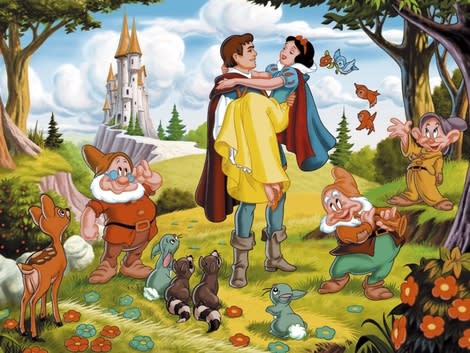500 New Grimm-like Fairy Tales Discovered in Europe

Jacob and Wilhelm Grimm wrote some of the world's most famous and familiar fairy tales -- stories like "Hansel and Gretel," "Rapunzel," and "Snow White." Now, more than 500 other stories from the same era have been discovered in Germany, a treasure trove of magical tales and legends that haven't been read for more than 150 years.
[Related: 5 lessons I don't want my son learning from princesses]
The fairy tales, which were found in an archive in Regensburg, Germany, had been gathered by local historian Franz Xaver von Schonwerth in the mid-1800s, around the same time that the Brothers Grimm were crafting their own.
While the Grimm brothers sometimes wove fanciful stories out of local folk tales, von Schonwerth, a historian, spent his life researching the customs, history, and traditions of the local people and writing down their stories, carefully documenting what he heard without adding embellishments of his own. The Grimms knew of von Schonwerth's work; in 1885, Jacob Grimm said "Nowhere in the whole of Germany is anyone collecting [folklore] so accurately, thoroughly and with such a sensitive ear," the British newspaper The Guardian reported.
Von Schonwerth's work was published in a three-volume series called "Aus der Oberpfalz -- Sitten und Sagen," which came out in the 1850s. Unlike the Brothers Grimm, whose first volume of vivid and violent fairytales -- "Kinder- und Hausmarchen" -- was published in 1812, von Schonweth's books never became popular, even though some of his local stories were familiar.
Erika Eichenseer, who is the cultural curator of the Oberpfalz region of Germany where the stories originated, found von Schonweth's collection and discovered than many of the 500 fairytales he wrote down did not appear in other European story books.
"There is the tale of a maiden who escapes a witch by transforming herself into a pond," The Guardian describes. "The witch then lies on her stomach and drinks all the water, swallowing the young girl, who uses a knife to cut her way out of the witch." Other stories include cautionary tales of a tight-fisted farmer and a money mill, and a charming story about faith and belief called "The Turnip Princess"(you can read it here), about a young man who follows an old crone's advice to find a lovely wife.
Stories like these were usually used to illustrate a life lesson -- and were not necessarily for children, in spite of the fact that the books written by the Brothers Grimm were called "Children and Household Tales."
"Their main purpose was to help young adults on their path to adulthood," Eichenseer told The Guardian, "showing them that dangers and challenges can be overcome through virtue, prudence, and courage."
Those ideals run through most of the stories that have remained popular today, but the Disney-fied versions we grew up with in the U.S. are far more cheery and less violent than the originals. In the 1812 version of Grimm's "Snow White," for example, the wicked queen is Snow-White's mother, not her step-mother; demands that the hunter kill her own daughter and bring her the girl's lungs and liver, which she cooks and eats without knowing they're really from a wild boar. At the end of the story, the queen is forced by Snow White to wear red-hot iron shoes and dance until she falls down dead.
Last year, Eichenseer published some of von Schonwerth's fairy tales in German; an English translation, which may include different versions of classics like Cinderella and Rumpelstilskin, is in the works.
Copyright © 2012 Yahoo Inc.
Also on Shine:
Dead Disney princesses? Artist kills off fairy tale heroines
Do fairy tales give tweens false impressions?
12 real-life fairy tale homes
